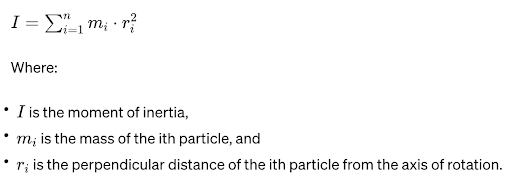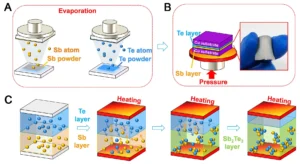Moment of inertia is a fundamental concept in physics that plays a crucial role in understanding the rotational motion of objects. Also known as angular mass or rotational inertia, moment of inertia describes an object’s resistance to changes in its rotational motion. This property is analogous to mass in linear motion, as it quantifies how an object’s mass is distributed with respect to its axis of rotation.
Definition:
Moment of inertia (I) is defined as the sum of the products of each particle’s mass (m) and the square of its perpendicular distance (r) from the axis of rotation. Mathematically, it can be expressed as:

Physical Interpretation:
The physical interpretation of moment of inertia can be illustrated through the analogy of a rotating wheel. A wheel with more mass located farther from the axis of rotation has a higher moment of inertia. Intuitively, it requires more torque to accelerate or decelerate a wheel with a larger moment of inertia.
Types of Moment of Inertia:
Point Mass Moment of Inertia:
For a system of point masses, the moment of inertia is calculated using the formula mentioned above.
Continuous Body Moment of Inertia:
For a continuous body with a distribution of mass, the moment of inertia is determined through integration. The general formula is:
I = ∫ r dm
where dm is a small mass element.
Parallel Axis Theorem:
This theorem relates the moment of inertia of an object about its centre of mass to the moment of inertia about a parallel axis. The formula is:

Applications:
Rotational Dynamics:
Moment of inertia is crucial in solving problems related to rotational motion. It appears in the rotational analog of Newton’s second law:
τ = I ⋅ α
where τ is the torque applied,
I is the moment of inertia, and
α is the angular acceleration.
Engineering and Design:
Engineers use moment of inertia calculations to design and optimise rotating machinery, such as flywheels and gears. Understanding moment of inertia helps ensure stability and efficiency in these systems.
Sports and Recreation:
Moment of inertia is also relevant in sports equipment design, such as in the construction of tennis rackets, golf clubs, and other rotating objects. Athletes and designers consider moment of inertia to achieve the desired performance characteristics.
Conclusion:
Moment of inertia is a fundamental concept in physics with broad applications in various fields. Its understanding is crucial for analysing and predicting the rotational behaviour of objects, making it an indispensable tool in both theoretical physics and practical engineering. As technology advances, our ability to leverage this concept continues to grow, contributing to innovations in numerous industries.




